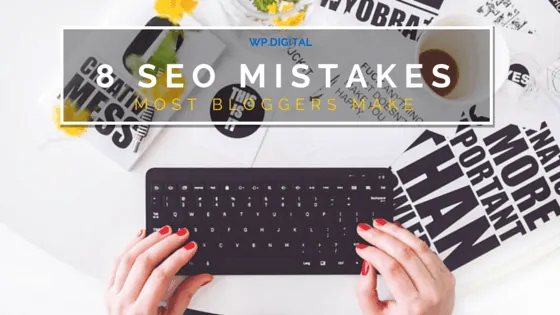Even the best SEO enthusiasts make mistakes with their blogs. Read this article to find out what SEO blog mistakes you should be avoiding and learn how you can fix them!
Posted on May 17, 2019
How Does Bounce Rate work?
Your website’s bounce rate is the percentage of sessions in which a visitor only views one page before leaving. For instance, a user may land on your website and read a couple paragraphs before exiting to a new website. The session could also end when the user hits the back button, clicks on an external link, or spends a long period of time inactive on the site.
Tracking your bounce rate can be helpful for several reasons:
- It is a ranking factor. Google typically sees websites with a lower bounce rate as more user friendly and relevant to the search terms.
- Bounce rates can help you make sure that people are engaging in your website and finding it useful or interesting.
- A high bounce rate is a symptom something isn’t working right and can help you find errors. For instance, a 20% increase in bounce rate could signal an extremely slow load time.
7 Ways to Lower Your Bounce Rate
The following methods could help you lower your bounce rate by making your website more user friendly.
- Include media on your home page. Adding media breaks up walls of text and adds interest, and can keep people engaged, but it means more than just using any visually appealing picture or video. You want to use images, infographics, or videos in a way that helps your visitor and sparks interest in your business. For instance, a customer testimonial can help your product or services be more reliable, while a before and after picture of your work helps a user see previous results.
- Use an infographic. An infographic is interesting to look at, makes it easy for visual learners to digest information, and can organize content in a way that is easy to understand.
- Use internal links to guide navigation. If a difficult term links to the definition on your website’s glossary, it is easy for a user to understand without leaving the website. When you mention a product and link the word to a product page, the user can easily find what they are looking for without having to use a sidebar or menus. Internal linking encourages people to explore the site and click on new pages to find detailed information.
- Break up your text. A couple of long paragraphs on a page can be intimidating, and most people won’t read through. Instead, break up long content with headings, bullet points, and lists. Your visitors will also be able to skim the page and find their way to the section with the information that they are looking for.
- Make your content interesting and credible. Referencing authoritative sources, using humor and creativity, or finding a unique way to present information are all ways to help your content stand out and appeal to readers. It is also important to make your content appeal to your target market. A website for a low-cost, broadly appealing product like chocolate should have a different tone than a website for a luxury apartment complex.
- Have a layout that makes sense for each user. When choosing the layout for your website, consider who your visitors will be. You may have people interested in purchasing your product for the first time alongside people who are existing customers. Your main menu should have options for each of them to easily find the information they need. Consider including a current customers option and separate informational links to educate new users.
- Make sure your website loads quickly. Nothing makes users more annoyed than a slow to load website. This tool can help you determine your page load speed and suggests ways to make it even faster.
Contact Our WordPress Web Design Agency in Raleigh
Are you looking for a web design agency in Raleigh? Our team works with a variety of factors to ensure your website is user-friendly, search engine friendly, quick to load, and easy to update. Call us at 888-239-9222 or fill out our form here.




